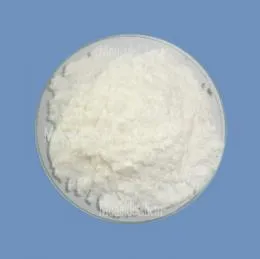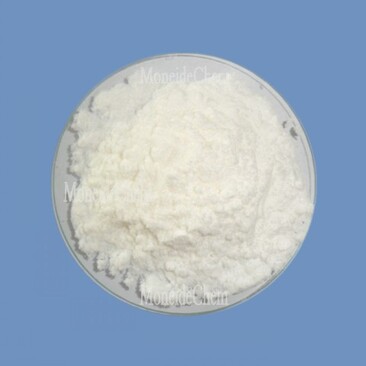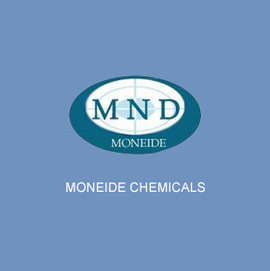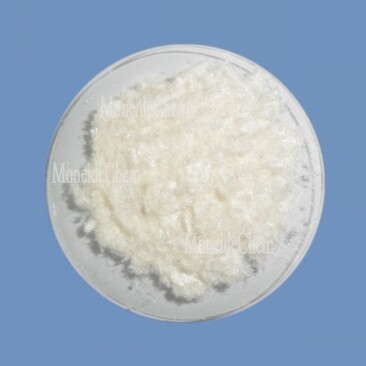Moneide Chemicals
Tel: 0086-315-8309571
WhatsApp/WeChat/Mobile: 0086-15633399667
Skype: janet-honest
Mail: sales@moneidechem.com
Address: 2-7-523 Jidong Building Materials Commercial Center, Tangshan, Hebei 064000 China
Advancements and Applications in Electroplating Chemistry
- Time of issue:5 сар . 16, 2025 13:56
(Summary description)Tangshan Moneide Trading Co., Ltd. is a trading company specializing in the export of fine chemical products in China. Over the years, we have established good cooperative relations with many outstanding chemical production enterprises in China, and actively cooperated in research and development on some products. Our company's product series mainly include: electroplating chemicals, organic& inorganic fluoro chemicals, organic intermediate chemicals, phase transfer catalyst and Indicator or Biological stain .
- Categories:Company dynamic
- Author:
- Origin:
- Time of issue:2019-12-30 10:55
- Views:
The field of electroplating relies on precise chemical formulations and processes to deposit thin, adherent metal layers onto various substrates, enhancing functionality and appearance. Among the key techniques and materials are alkaline zinc plating, brass plating chemicals, brightener electroplating, chemical copper plating, and chemical electroplating, each playing a vital role in industrial and manufacturing sectors. One notable process in this field is alkaline zinc plating, which offers distinct advantages for protecting metal components from environmental damage. This method utilizes alkaline electrolytes, typically based on zincate solutions, to deposit a uniform zinc layer. The alkaline environment is gentle on substrates like aluminum and cast iron, minimizing corrosion during the plating process. Alkaline zinc plating is widely used in automotive parts, hardware, and electrical components, providing excellent adhesion and resistance to salt spray and humidity. The process often incorporates additives to improve current efficiency and deposit quality, ensuring consistent results even on complex geometries. Brass plating chemicals are essential for creating alloy coatings composed of copper and zinc, valued for their aesthetic appeal and mechanical properties. These chemicals include copper cyanide, zinc cyanide, and alkaline solutions that facilitate the co - deposition of both metals. The formulation of brass plating chemicals must maintain a precise balance of copper and zinc ions to achieve the desired alloy composition, ranging from red brass (higher copper) to yellow brass (higher zinc). This process is popular in decorative applications for furniture, jewelry, and architectural fixtures, as well as in industrial settings for enhancing wear resistance on gears and connectors. In electroplating, brightener electroplating agents are used to achieve smooth, shiny deposits without mechanical polishing. These organic compounds adsorb onto the metal surface during electrodeposition, suppressing the formation of rough crystal structures and promoting a mirror - like finish. Brightener electroplating is critical in industries such as automotive and consumer electronics, where appearance and corrosion resistance are paramount. Common brighteners include sulfonated aromatic compounds and polyvinyl alcohol derivatives, which work alongside 整平剂 to ensure uniform brightness across large surfaces or intricate details. Chemical copper plating offers a non - electrical method for depositing copper layers, making it ideal for non - conductive materials like plastics, ceramics, and printed circuit boards (PCBs). This process relies on redox reactions where copper ions are reduced by a chemical agent, such as formaldehyde or hypophosphite, forming a thin, catalytic copper layer. Chemical copper plating serves as a base for subsequent electroplating on PCBs, enabling the creation of conductive traces on insulating surfaces. It also finds use in decorative applications and repair work, providing a uniform copper coating without the need for an external power source. Chemical electroplating encompasses a broad range of processes that use electrical current to drive metal ion deposition onto a cathode substrate. The chemistry behind these processes involves electrolytes containing metal salts, conductive agents, and additives to control deposition rate, morphology, and purity. For example, nickel electroplating uses sulfamate or watts baths, while gold plating relies on cyanide or neutral solutions. Chemical electroplating is pivotal in aerospace for coating turbine components, in jewelry for precious metal layers, and in electronics for enhancing conductivity and wear resistance of connectors. Proper management of electrolyte composition and plating parameters is essential to achieve consistent, high - quality deposits. To enhance the efficiency of alkaline zinc plating, operators must monitor pH levels (typically 12–14), temperature, and the concentration of complexing agents like sodium hydroxide. Regular filtration of the bath prevents contamination from particulates, while periodic analysis ensures the correct ratio of zinc ions to cyanide (in cyanide - based baths) or hydroxide (in non - cyanide alternatives). For brass plating chemicals, maintaining the copper - to - zinc ratio is critical. Using automated dosing systems to replenish metal salts and controlling current density (0.5–5 A/dm²) helps avoid brittleness or dullness in the alloy deposit. Proper rinsing after plating prevents residual chemical attack on the substrate. When using brightener electroplating agents, it is essential to avoid overdosage, which can cause stress in the deposit or reduced ductility. Conducting Hull cell tests regularly helps optimize brightener concentration and ensures uniform luster across different areas of the workpiece. In chemical copper plating for PCBs, surface preparation is key. Degreasing and micro - etching the substrate ensure proper adhesion of the catalytic copper layer. Controlling the temperature (50–70°C) and reducing agent concentration prevents excessive deposition or uneven coating. Modern chemical electroplating emphasizes eco - friendly formulations, such as cyanide - free baths for zinc and brass plating, and recycling systems for spent electrolytes. Implementing closed - loop water treatment and proper waste disposal minimizes environmental impact while complying with regulatory standards.
Alkaline Zinc Plating: A Robust Corrosion Resistance Solution
Brass Plating Chemicals: Crafting Decorative and Functional Alloys
Brightener Electroplating: Enhancing Surface Luster and Performance
Chemical Copper Plating: Electroless Deposition for Non - Conductive Substrates
Chemical Electroplating: Fundamentals and Diverse Applications
Key Considerations in Electroplating Processes
Optimizing Alkaline Zinc Plating Baths
Ensuring Brass Plating Consistency
Maximizing Brightener Effectiveness in Electroplating
Chemical Copper Plating on PCBs
Environmental Practices in Chemical Electroplating



























